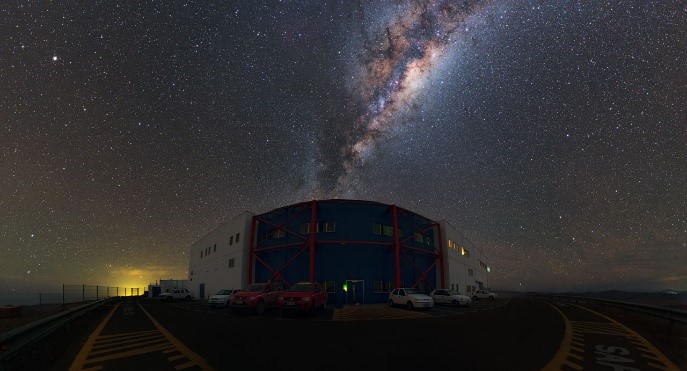





Disclaimer: Copyright infringement not intended.
Context
Note: The Indian Astronomical Observatory (IAO), a high-altitude astronomy station located in Hanle, and operated by the Indian Institute of Astrophysics, is India's first dark-sky preserve.
Situated in the Western Himalayas at an elevation of 4,500 meters (14,764 ft), the IAO is one of the world's highest located sites for optical, infrared and gamma-ray telescopes.
Need and Significance
Dark Sky Park
Key Features:
Low Light Pollution:
Stargazing Opportunities:
Conservation of Natural Darkness:
Educational Programs:
Community Involvement:
Lighting Guidelines:
International Dark-Sky Association (IDA):
IDA Designations:
Certification Process:
Examples of Dark Sky Parks:
Dark Sky Parks contribute to the conservation of natural darkness, the protection of nocturnal environments, and the promotion of astronomy and scientific education. They serve as crucial sanctuaries for those seeking a pristine and immersive stargazing experience.
Pench Tiger Reserve:
Location:
Establishment:
Flora and Fauna:
Rivers and Landscape:
Tourism and Conservation:
Connectivity:
Notable Attractions:
Significance:
|
PRACTICE QUESTION Question: Which of the following characteristics is/are typically associated with Dark Sky Parks? 1. High levels of artificial light to enhance visibility during nighttime activities. 2. Promotion of energy-efficient lighting fixtures. 3. Conservation of natural darkness for ecological and astronomical benefits. Select the correct answer using the code given below: A) 1 only B) 2 and 3 only C) 1 and 2 only D) 3 only The correct answer is: B) 2 and 3 only Explanation: High levels of artificial light to enhance visibility during nighttime activities.
Promotion of energy-efficient lighting fixtures.
Conservation of natural darkness for ecological and astronomical benefits.
Therefore, the correct answer is B) 2 and 3 only. PRACTICE QUESTION Q. Arrange the following events related to Pench Tiger Reserve in chronological order: 1. Declaration as a tiger reserve. 2. Recognition as a UNESCO World Heritage Site. 3. Designation as a wildlife sanctuary. 4. Establishment of the Pench Biosphere Reserve. Select the correct chronological sequence using the code given below: A) 3, 1, 2, 4 B) 4, 3, 1, 2 C) 3, 4, 1, 2 D) 1, 3, 2, 4 The correct chronological sequence is: B) 4, 3, 1, 2 Explanation: Establishment of the Pench Biosphere Reserve:
Designation as a wildlife sanctuary:
Declaration as a tiger reserve:
Recognition as a UNESCO World Heritage Site:
|






© 2026 iasgyan. All right reserved